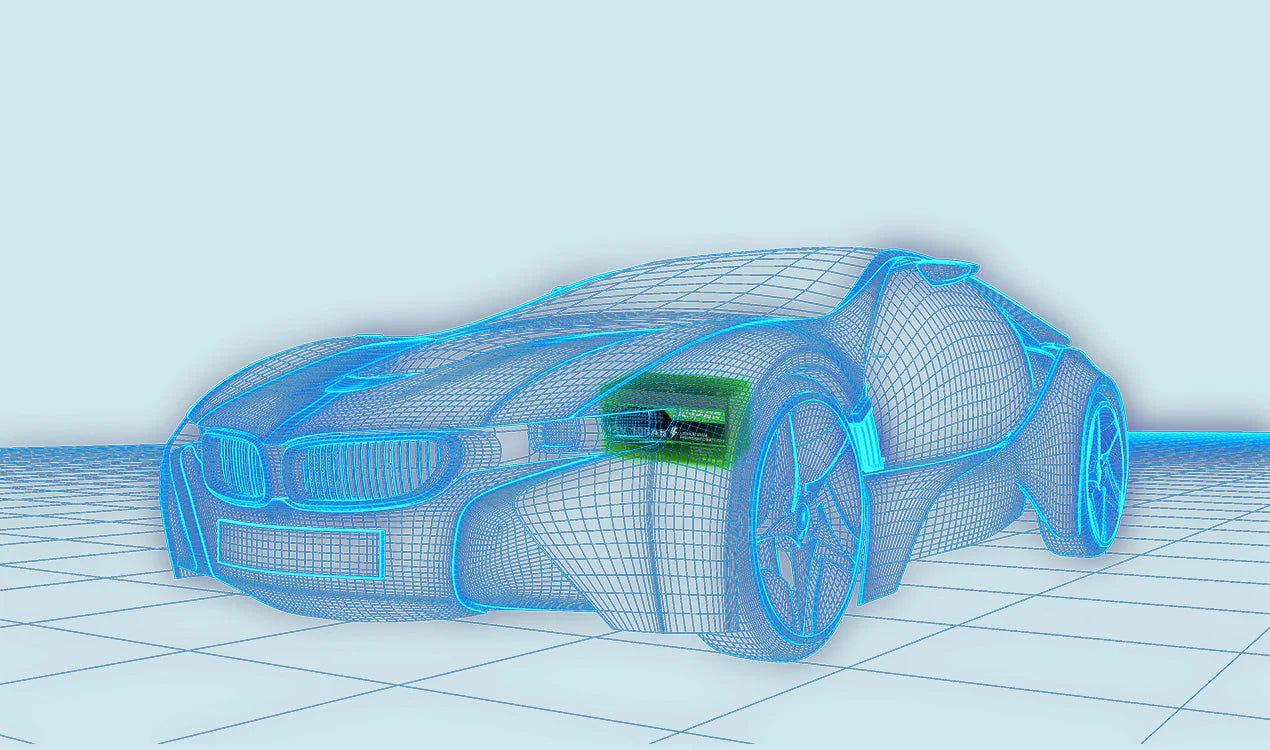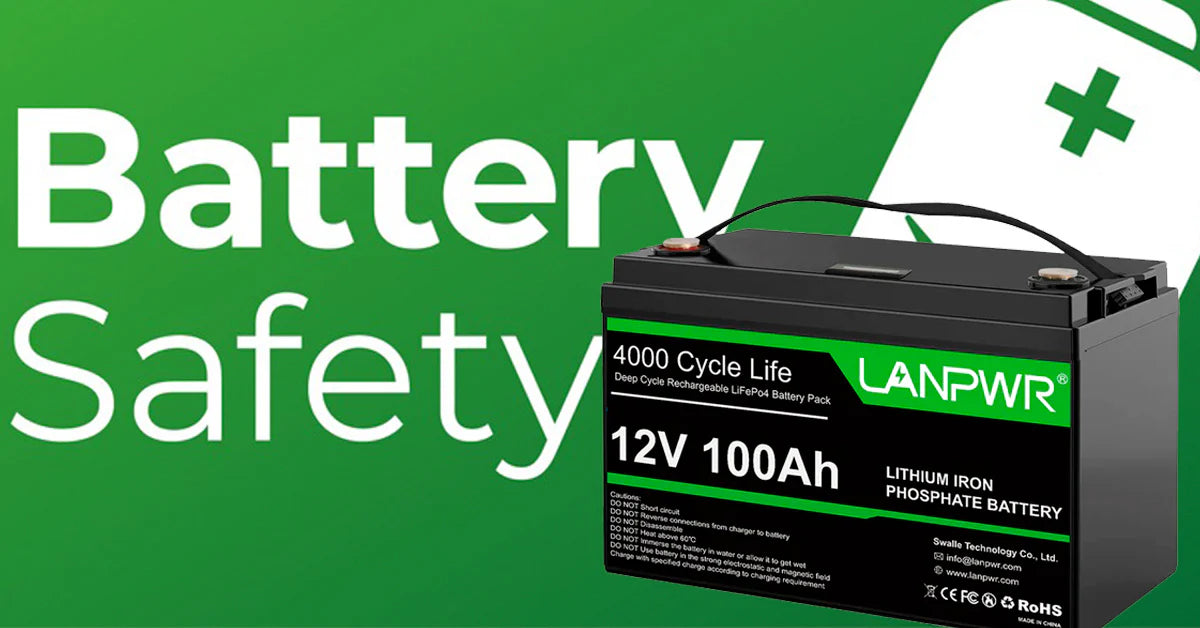The transportation sector is witnessing a transformation from traditional vehicles to Electric vehicles (EVs) due to advancements in battery technology. Lithium Iron Phosphate (LiFePO4) batteries and older conventional lead-acid batteries are the two major batteries used in EVs. LiFePO4 and lead acid batteries life both of them are designed for automotive, and work as a power unit for electric vehicles, on the other hand, the advantages that LiFePO4 batteries provide over their lead-acid equivalent.
The following paper examines the advantages of LiFePO4 batteries in five major aspects performance, lifetime, safety, environmental friendliness, and overall efficiency with specific sections covering each.
1. Higher Energy Density
Higher energy density: LiFePO4 batteries can get a lot more energy in a smaller place than lead-acid batteries. It's the measure of the ratio of how much energy a battery can store to its weight.
As to energy density: When it comes to energy density, LiFePO4 usually scores between 90-110 Wh/kg.
Lead Acid Energy Density: Generally, lead-acid energy density is about 30 to 50 Wh/kg, which is much lower.
What is crucial is that LiFePO4 batteries offer you higher energy density, which means will manage to hold a lot more power in a smaller and also lighter package, which is beneficial to those cars powered by electricity. A lighter battery pack reduces the overall weight of the vehicle, making the vehicle lighter and more fuel-efficient.
2. Longer Cycle Life
Cycle life: it is the number of complete charge-discharge cycles that should be done to drop the capacity of a battery to an acceptable level. LiFePO4 batteries vs Lead-Acid batteries Cycle lifeLiFePO4 batteries exhibit a much longer cycle life than lead-acid batteries.
LiFePO4 Cycle Life: Zenergy has a cycle life of 2000-3000 cycles per cell and it can go up to 5000 cycles in advanced models.
Lead-Acid Cycle Life: Lead-acid on the other hand typically cycles 300-500 times.
The cycle life affects the frequency at which the battery is replaced which is the better the worse environmental and cost-effectiveness (given that the LiFePO4 compared to lead acid batteries have a longer cycle life and therefore do not need to be replaced as often).
3. Improved Charging Efficiency
The charging efficiency of LiFePO4 batteries compared to lead-acid batteries is much greater as well. Efficiency in charging (energy in battery)/ (energy supplied during charging) ×100.
LiFePO4 Charging Efficiency: In normal conditions, the charging efficiency of LiFePO4 is higher than 95%.
Lead-Acid Charging Efficiency: The charging efficiency of lead-acid batteries is low, ranging typically from about 70% to 80% of the electrical energy that is used, which is converted into chemical energy.
The increased charging efficiency results in less energy wasted during charging, which is especially useful for electric vehicles that are charged from the grid or renewable electricity plants.
4. Safety and Stability
Batteries for electric vehicles must prioritize safety since LiFePO4 batteries have better thermal stability and are more secure than lead-acid batteries.
LiFePO4 Thermal stability: LiFePO4 batteries have been regarded as safe when thermal stability is concerned as generally a LiFePO4 battery rarely explodes due to overheating (in contrast, Lithium Cobalt batteries can explode or catch fire when severe overcharging takes place).
Lead-Acid Safety: Lead-acid batteries can run very hot and sulfuric acid leaks which can be very corrosive and hazardous.
This is why LiFePO4 batteries are a good choice when the concern is safety, particularly for electric vehicles where safety is a very important issue.
5. Environmental Impact
For that reason, their impact on the environment is smaller than that of the lead-acid batteries.
Pollution: The waste from lead-acid batteries has such a high toxicity of lead and sulfuric acid making it most hazardous to the environment
Lead: Lead is a heavy metal and when it is released to the environment it can be dangerous for the environment and the health of a living being.
LiFePO4 materials: LiFePO4 batteries do not have any dangerous heavy metals in them such as lead. LiFePO4 batteries also use materials that are considered to be more environmentally safe.
In addition, the longer service life of LiFePO4 batteries would reduce the number of batteries used to be manufactured and thrown away, thereby reducing the environmental footprints.
6. Maintenance Requirements
Block batteries This competitors quite well together with the functions obtainable in lithium-ion power packs Guide chemical p electric batteries will need continual repair to maintain maximum overall performance, which includes looking at and also sugar levels along with cleansing terminals.
LiFePO4 maintenance: LiFePO4 batteries if properly connected to the 12v solar battery system need no maintenance. They don't need frequent electrolyte top-ups or terminal cleaning.
For lead-acid: Must be constantly maintained to avoid sulfation that will reduce the lifespan of the battery, however, regular maintenance can be time-consuming and expensive over time.
With the low maintenance requirements it offers, LiFePO4 is more convenient costs less than traditional battery types, and can save time for the electric vehicle owner.
7. Depth of Discharge (DoD)
Depth of Discharge (DoD): how much of the battery's capacity can be used before recharging.
DoD of LiFePO4: A LiFePO4 battery can be fully discharged to 80-90 % without affecting the lifespan.
DoD of Lead-Acid: Lead-acid batteries, however, should not be drawn beyond 50% and their life is shortened as a result.
This increased usable energy results in greater useful range and utility when used in electric vehicles compared to other lithium-ion batteries.
8. Performance in Harsh Temperatures
In other words, LiFePO4 performs better in a greater temperature range than lead-acid batteries.
LiFePO4 Operating Temperature: This battery chemistry performs well under temperatures between -20°C and 60°C.
Most lead acid batteries lose some capacity and efficiency during cold weather conditions.
The wider operational temperature range makes LiFePO4 batteries versatile and more reliable in different climatic conditions, which is imperative for electric vehicles working in a wide range of environments.
9. Faster Charging Rates
LiFePO4 batteries can be charged at an even faster rate than lead-acid batteries without causing damage to the batteries.
LiFePO4 charging Rates: These batteries can be charged at high current rates, accelerating the charging of the vehicle.
Lead-Acid: Lead Acid requires a slower charging rate to prevent internal damage and excessive heat.
LiFePO4 batteries used in electric cars charge faster, allowing users to spend less time at charging stations, which in turn makes EVs more convenient for daily use.
Summary
LiFePO4 batteries boast a range of benefits that places them ahead of traditional lead-acid batteries for electric vehicle applications, such as a higher energy density, a longer cycle life, better charging efficiency, greater safety, a lower environmental footprint, a reduced maintenance requirement, improved performance at extreme temperatures, a higher depth of discharge, and a swifter charging rate. These features are well-suited to LiFePO4 batteries which is why they are considered a top option for vehicles and offer a great way to keep a motor running.
The superior performance and benefits of LiFePO4 batteries compared to conventional lead-acid batteries, combined with the growing demand for electric vehicles, suggest that adoption of the former is set to increase. Choosing LiFePO4 technology is not only one of the best things for the increased performance and reliability of electric vehicles, but it also leads to a future where we all can exist in a more sustainable world.














Leave a comment
This site is protected by hCaptcha and the hCaptcha Privacy Policy and Terms of Service apply.